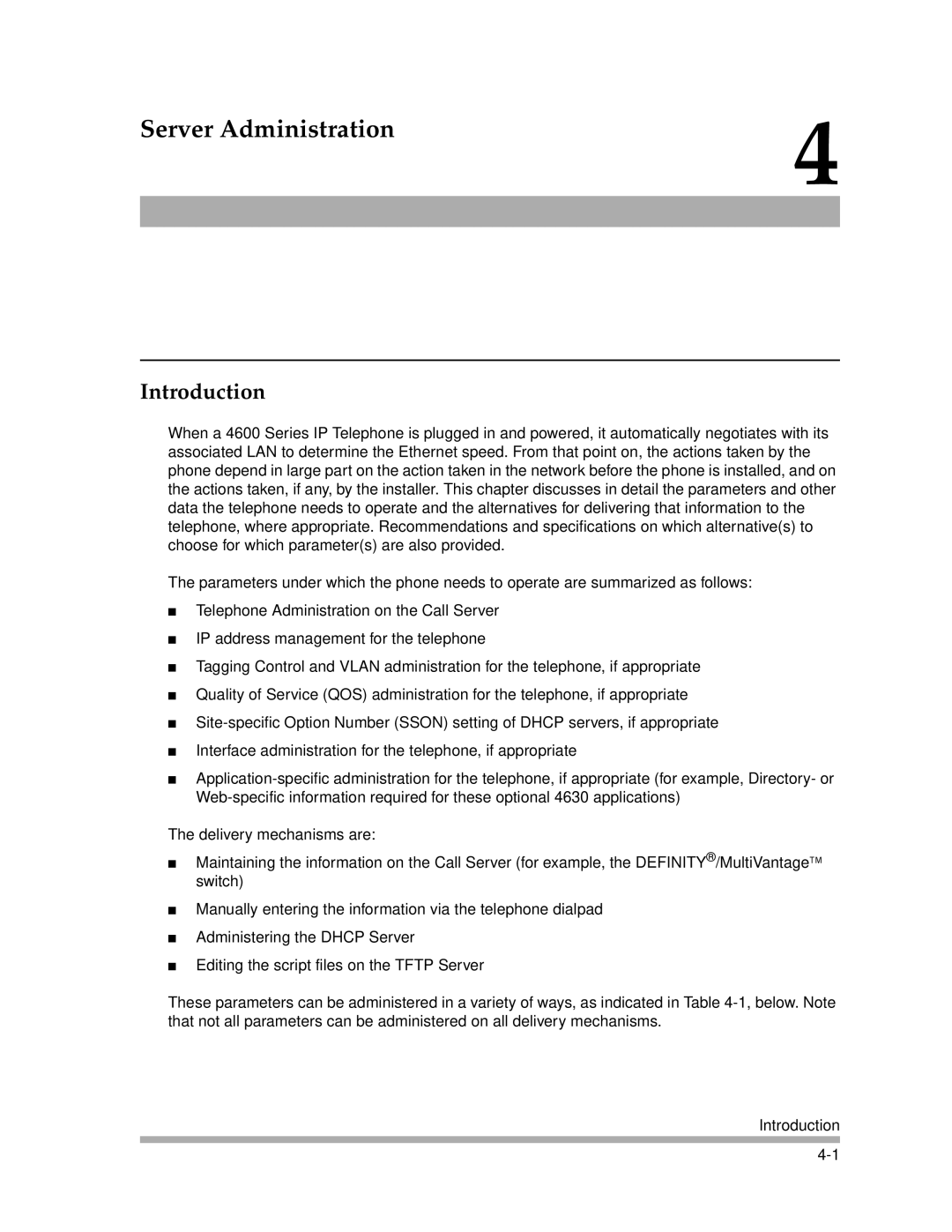
Server Administration | 4 |
| |
|
|
|
|
Introduction
When a 4600 Series IP Telephone is plugged in and powered, it automatically negotiates with its associated LAN to determine the Ethernet speed. From that point on, the actions taken by the phone depend in large part on the action taken in the network before the phone is installed, and on the actions taken, if any, by the installer. This chapter discusses in detail the parameters and other data the telephone needs to operate and the alternatives for delivering that information to the telephone, where appropriate. Recommendations and specifications on which alternative(s) to choose for which parameter(s) are also provided.
The parameters under which the phone needs to operate are summarized as follows:
■Telephone Administration on the Call Server
■IP address management for the telephone
■Tagging Control and VLAN administration for the telephone, if appropriate
■Quality of Service (QOS) administration for the telephone, if appropriate
■
■Interface administration for the telephone, if appropriate
■
The delivery mechanisms are:
■Maintaining the information on the Call Server (for example, the DEFINITY® /MultiVantageTM switch)
■Manually entering the information via the telephone dialpad
■Administering the DHCP Server
■Editing the script files on the TFTP Server
These parameters can be administered in a variety of ways, as indicated in Table
Introduction
